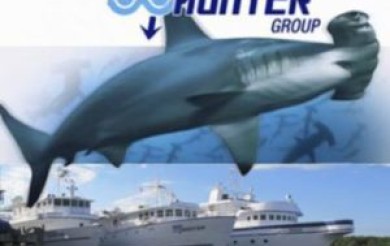Flyingfish of Cocos Island
If there is one fish that can efficiently evade its predator, then nothing beats the flyingfish. Aside from their elongated body with large scales that can easily be detached, what is prominent with their identification is the large and highly developed pectoral fins which allows them to leap out of the water and propel themselves in air.
How do flyingfish leap out of the Water
While flyingfish leaps out in order to get away from a predator, this evading process involves the sudden burst of speed which may require too much energy and may exhaust a flyingfish where they can easily be caught instead of getting away.
In order to conserve energy while getting away, flyingfish starts the evading process by swimming fast near the surface using its caudal fin while the pectoral fin is still tucked in to prevent drag. Once it reaches an ideal speed, which is pretty much the same when an airplane takes off, it starts to leap out of the water in an almost horizontal streamline direction. This is only the moment that flyingfish opens their pectoral fins where they are now able to glide near the surface where they can reach a speed of up to 70 km/h or 43 mph and the length of their flight may reach 200 meters in a span of 45 seconds before settling back underwater.
Species of Flyingfish in Cocos Island
Out of the 64 species of fyingfish found worldwide, you can find at least 5 species here in Cocos Island. However, due to limited study and scientific references, we are only presenting the representative species that has a sufficient amount of data. Here are two representative species of flyingfish that can be found in Cocos island:
Tropical Two-wing Flyingfish (Exocoetus volitans)
Other Name: Blue Flyingfish
Max. Length: 30 centimeters
Length at 1st Maturity: 18.5 centimeters
a value:
b value:
Depth Range: 0 – 20 meters (0 – 60 feet)
Frequency: Abundant in the world’s tropical water
A tropical two-wing is one of the flyingfish species that tends to congregate its population and form a school where they simultaneously leap out of the water when disturbed or chased upon by a predator. You can easily identify them through their broad cylindrical body that are colored dark blue with a black undertone on the upper part while the lower body has a silvery white shading.
If you are taking pictures using a camera with good lens, you will be surprised that, despite being a small fish, they have large scales which is smooth when touched and can easily be detached. The lower jaw is longer than the upper jaw which is a characteristic similar to halfbeaks. Their grey-colored pectoral fins are elongated and highly developed that can reach up to the base of its tail. Their caudal fin are highly forked in shaped where the lower fin is longer compared to the upper fin.
Mirrorwing Flyingfish (Hirundichthys speculiger)
Max. Length: 25.1 centimeters
Length at 1st Maturity: 15.8 centimeters
a value:
b value:
Depth Range: 0 – 2,000 meters (0 – 6,600 feet)
Frequency: Abundant in the world’s tropical water
A mirrorwing flyingfish is considered as a true master in both surface and deep water habitats. While they thrive mostly in the shallow areas of the open water environment, they can also been found in deep water ecosystem where they reach up to 2,000 meters deep. The main difference between their behavior in these two different environments is that their pectoral fins are mostly spread out when at surface and it is tucked in while they are diving deep down under. Up to now, it is still a mystery why this species of flyingfish goes to the abyssal depths of the ocean.
When it comes to the name of this species, it is based on the appearance of their pectoral fins that reflects sunlight when it is spread out which is similar what a mirror does. This is due to a substance called hyaline which is pretty much abundant in their pectoral and the rest of their fins.
Possible Implications on a Flyingfish Highly developed Pectoral Fins in Evolution
Before we end this article, reflect on this question as a biological possibility to answer illegal fishing, not just in Cocos Island, but to the rest of world’s water: What if all fish species have a highly developed pectoral fin?
While evolution of species is constant, the evolutionary adaptation is always based on the characteristic that needs to be improved. Come to think of this: if declining fish stocks is primarily caused by commercial fishing using highly efficient nets, the onset of evolutionary process could trigger the development of highly efficient pectoral fins which could be their only way to evade the annihilating effects of modern fishing gears. But just in case this happens, always wear a helmet or any protective gear as fish of all sorts will be flying in all directions.
Reference
Fishbase: www.fishbase.org
IUCN Redlist of Threatened Species: www.iucnredlist.org
Encyclopedia of Life: www.eol.org
Video courtesy from wwenaty
Cocos Island Liveaboard Trips for 2019
Due to high demand of liveaboard trips to Cocos island, as early as this year, we are publishing the 2019 trips for you to choose your preferred schedule and prepare for the ultimate diving adventure of your life. Reserve your seat to Cocos Island as they are selling like hotcakes. Schedule of Liveaboard Trip to […]

















